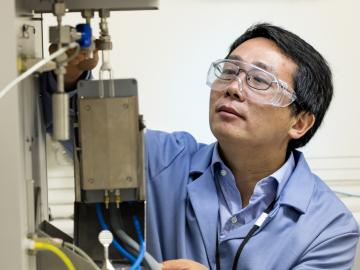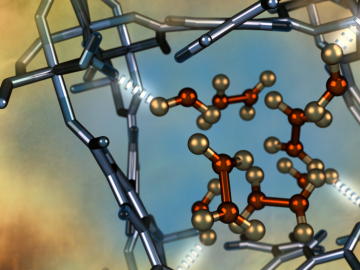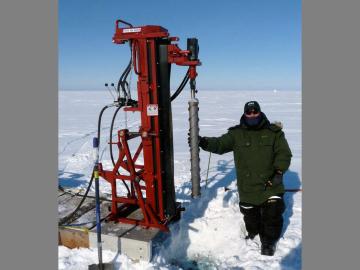
Filter News
Area of Research
- Advanced Manufacturing (8)
- Biological Systems (3)
- Biology and Environment (8)
- Building Technologies (3)
- Clean Energy (108)
- Climate and Environmental Systems (4)
- Computational Biology (1)
- Computational Engineering (1)
- Computer Science (8)
- Energy Frontier Research Centers (1)
- Fossil Energy (1)
- Fuel Cycle Science and Technology (1)
- Fusion Energy (7)
- Materials (107)
- National Security (7)
- Neutron Science (49)
- Nuclear Science and Technology (25)
- Nuclear Systems Modeling, Simulation and Validation (1)
- Quantum information Science (3)
- Sensors and Controls (2)
- Supercomputing (54)
- Transportation Systems (1)
Date
News Topics
- 3-D Printing/Advanced Manufacturing (20)
- Advanced Reactors (8)
- Artificial Intelligence (13)
- Big Data (8)
- Bioenergy (11)
- Biology (1)
- Biomedical (9)
- Biotechnology (1)
- Clean Water (6)
- Climate Change (1)
- Composites (5)
- Computer Science (49)
- Critical Materials (1)
- Cybersecurity (8)
- Energy Storage (10)
- Environment (22)
- Exascale Computing (2)
- Frontier (2)
- Fusion (9)
- Grid (8)
- Isotopes (7)
- Machine Learning (5)
- Materials Science (30)
- Mercury (2)
- Microscopy (10)
- Molten Salt (5)
- Nanotechnology (15)
- Neutron Science (26)
- Nuclear Energy (27)
- Physics (15)
- Polymers (7)
- Quantum Science (13)
- Security (9)
- Space Exploration (6)
- Summit (11)
- Sustainable Energy (8)
- Transportation (19)
Media Contacts

Amy Moore has found that her pursuit of several degrees and certificates in a variety of subjects is serving her well as she uses her expertise in transportation planning, geographic information science, and information technology to develop intelligent mobility solutions at ORNL. ...


Zili Wu of the Department of Energy’s Oak Ridge National Laboratory grew up on a farm in China’s heartland. He chose to leave it to catalyze a career in chemistry. Today Wu leads ORNL’s Surface Chemistry and Catalysis group and conducts research at the Center for Nanophase Materials ...

Led by the University of Manchester, an international team of scientists has developed a metal-organic framework material (MOF) that exhibits a selective, fully reversible and repeatable capability to remove nitrogen dioxide gas from the atmosphere in ambient conditions.

The U.S. Department of Energy’s Oak Ridge National Laboratory today unveiled Summit as the world’s most powerful and smartest scientific supercomputer.

Inspiration often strikes in the unlikeliest of places and for Kaushik Biswas, a mechanical engineer in ORNL’s Building Envelope & Urban Systems Research Group, a moment spent enjoying entertainment led to the idea of developing self-healing vacuum panels for buildings. “I was ...


Digging into the Arctic tundra, scientists at Oak Ridge National Laboratory have uncovered new insights into how quickly microorganisms break down organic matter in warming Arctic soil—a process that releases stored carbon as carbon dioxide and methane. The team studied soil extracted...


The Department of Energy’s Oak Ridge National Laboratory is now producing actinium-227 (Ac-227) to meet projected demand for a highly effective cancer drug through a 10-year contract between the U.S. DOE Isotope Program and Bayer.


